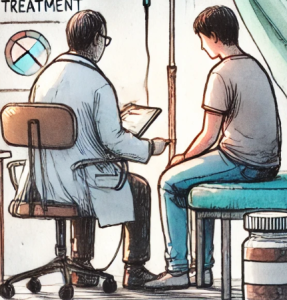
Opioid Policies to Combat Addiction
The opioid epidemic has taken a devastating toll on communities across the United States. To address this crisis, many states have implemented various drug policies aimed at reducing opioid misuse and overdose deaths. But have these policies truly been effective, or have they had unintended consequences? Let’s dive into the findings of a comprehensive study from JAMA that sheds light on this critical issue.
The Rise of the Opioid Crisis
The opioid epidemic can be traced back to the 1990s, when efforts to treat chronic pain led to aggressive marketing by pharmaceutical companies and an overreliance on opioid painkillers. As a result, opioid prescriptions surged, creating a pathway for widespread misuse and addiction. In response to the growing crisis, states began enacting policies to control the supply of prescription opioids and reduce overdose deaths.
Key Policies Examined
The study evaluated six key state-level drug policies:
- Prescription Drug Monitoring Programs (PDMPs): Databases tracking controlled substance prescriptions to prevent “doctor shopping.”
- Mandatory PDMPs: Requiring prescribers to check the PDMP database before prescribing opioids.
- Pain Clinic Laws: Regulations for the operation of pain clinics to prevent over-prescribing.
- Prescription Limit Laws: Caps on the number of days’ supply for opioid prescriptions.
- Naloxone Access Laws: Expanding access to naloxone, a medication that reverses opioid overdoses.
- Good Samaritan Laws: Providing legal protection for those who assist during an overdose emergency.
Findings: A Mixed Bag of Results
The study’s findings present a complex picture of the impact of these policies:
Reductions in Prescription Opioid Misuse
- Mandatory PDMPs: Associated with decreases in opioid prescriptions, overlapping opioid claims, high-dose opioid prescriptions, and “doctor shopping.”
- Pain Clinic and Prescription Limit Laws: Linked to increased prescriptions of medication-assisted treatment (MAT), which helps manage opioid use disorder.
Increases in Illicit Drug Overdoses
- PDMP Access: While reducing prescription opioid misuse, it was also associated with increased overdose deaths from synthetic opioids (e.g., fentanyl) and cocaine.
- Naloxone Access and Good Samaritan Laws: Surprisingly, these policies were linked to higher rates of overdose deaths, particularly from synthetic opioids and heroin.
The Unintended Consequences
The study suggests that while these policies have curbed prescription opioid misuse, they may have inadvertently pushed individuals with opioid use disorder toward more dangerous illicit drugs. This shift has resulted in higher overdose mortality from substances like fentanyl and heroin, which are often more potent and hazardous than prescription opioids.
Why This Matters
Understanding the effectiveness and limitations of state drug policies is crucial for public health practitioners and policymakers. The findings highlight the need for a balanced approach that addresses both the supply of prescription opioids and the underlying causes of opioid addiction.
The Road Ahead
The study underscores the importance of comprehensive strategies that go beyond controlling opioid prescriptions. Effective solutions should focus on:
- Enhancing Treatment Options: Expanding access to evidence-based treatments for opioid use disorder, including MAT and behavioral therapies.
- Addressing Root Causes: Tackling social and economic factors that contribute to addiction, such as poverty, unemployment, and mental health issues.
- Promoting Harm Reduction: Implementing measures that reduce the harm associated with drug use, such as safe injection sites and widespread availability of naloxone, while carefully monitoring their impact.
Join the Conversation
How do you feel about the findings of this study? Have you or someone you know been affected by opioid addiction? Share your thoughts and experiences in the comments below or on social media using #OpioidCrisisDiscussion.
- What steps do you think should be taken to improve current opioid policies?
- How can communities better support individuals struggling with opioid addiction?
Conclusion
The opioid epidemic is a multifaceted problem requiring nuanced solutions. While state-level policies have made strides in reducing prescription opioid misuse, the rise in illicit drug overdoses signals the need for a more holistic approach. By addressing the root causes of addiction and enhancing support for those affected, we can work toward a future where fewer lives are lost to this devastating crisis.
Be Part of the Change – Get Weekly Updates!
Stay informed and connected. Subscribe for free and share this blog to make a difference in public health with others.



